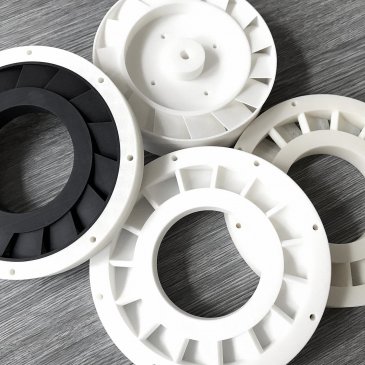SLS (Selective Laser Sintering) is a very popular 3D printing technology among various large manufacturing companies and therefore the most widespread of the individual methods.
How it works
Printing takes place by applying material in the form of powder to the substrate, which is then sintered at the desired points using a laser. Then the printing pad is moved down and the next layer is applied. This way you can make 3D prints from plastic, metal or ceramics. This technology is suitable for rapid prototyping and low-volume production.
Compared to, for example, FDM, this 3D printing technology has limited possibilities in the use of materials. These are polymers such as nylon and polystyrene, which can be enriched with glass, carbon fibers or aluminum. Because changing the material is very demanding - the entire printer needs to be thoroughly cleaned. As a rule, companies use each such 3D printer for only one material.
History
It started and was patented in the 1980s in the technology incubator of the University of Texas in Austin. It was one of the first methods of 3D printing. The startup that was created was the university's first commercial project, first under the name Nova Automation and since 1989 DTM. DuPont and General Motors Corp. could have been the initial investors, but it didn't work out. Finally, Goodrich Corp., a large maker of parts for the aerospace industry, invested.
The first commercial 3D printers of this kind were launched after 1992. Their sales were very low because the industry was still in its infancy. In 2001, DTM was purchased by 3D Systems, Inc. - a pioneer of another 3D printing method (stereolithography). With this move, 3D Systems Inc. began to control the largest share of the additive manufacturing market and still maintains this position.
You can read more about the history of this technology here.
Trends
Since this is a very interesting type of 3D printing from the point of view of manufacturing companies, not only in the automotive and aerospace industries, many 3D printer manufacturers are trying to bring smaller, affordable 3D printers to the market. The first desktop or behch-top printers of this kind began to appear in 2014 from the companies Shareboot (Italy) and Sintratec (Switzerland). The introduction of the Lisa printer from the Polish company Sinterit was highly anticipated - a compact solution with user-friendly controls, which you can also find in our offer. The market is waiting for the solution of the American company formlabs, which was supposed to be introduced in the spring of 2018, but due to technical problems it was postponed by at least a year. In the future, an influx of other players focusing on more affordable 3D printers for smaller companies is expected, e.g. Spanish naturalrobotics or Russian Red Rock. This technology is not expected to transfer to hobby 3D printing. However, it will certainly be more accessible to a wider range of smaller rems, so-called professional or semi-professional printing. The price of printers of this type has not yet fallen below 5,000 Euros, and it is necessary to consider the purchase of additional equipment for cleaning prints, which can double the price. SLS-based 3D printers are the most widely used among manufacturing firms, and their sales and use are expected to continue to grow.
Contrary to this trend, industrial SLS 3D printers from companies such as French Prodways, German EOS or American veteran 3D Systems have found wide application in companies. New players such as Advanced Production Tools SA (www.dynamicaltools.com) and others are entering this field every now and then.
There are also new material manufacturers and/or companies focused on dyeing prints (Dyemansions).
The use of a 3D printing service from a professional 3D printing provider appears to be the most advantageous for most business customers.
Advantages
-
No supports are required - the print is always surrounded by residual unbaked material
-
Relatively strong and durable prints
-
Good chemical resistance
-
Rich surface treatment options
Disadvantages
-
Expensive cleaning of the machine and print from fine powder
-
Prints have pores on the surface - this can be solved by subsequent surface treatment
-
High price of 3D printers
-
High consumption of material, which is not cheap
-
Limited range of usable materials
-
When creating a 3D model, material shrinkage, which may not be uniform, must be taken into account


